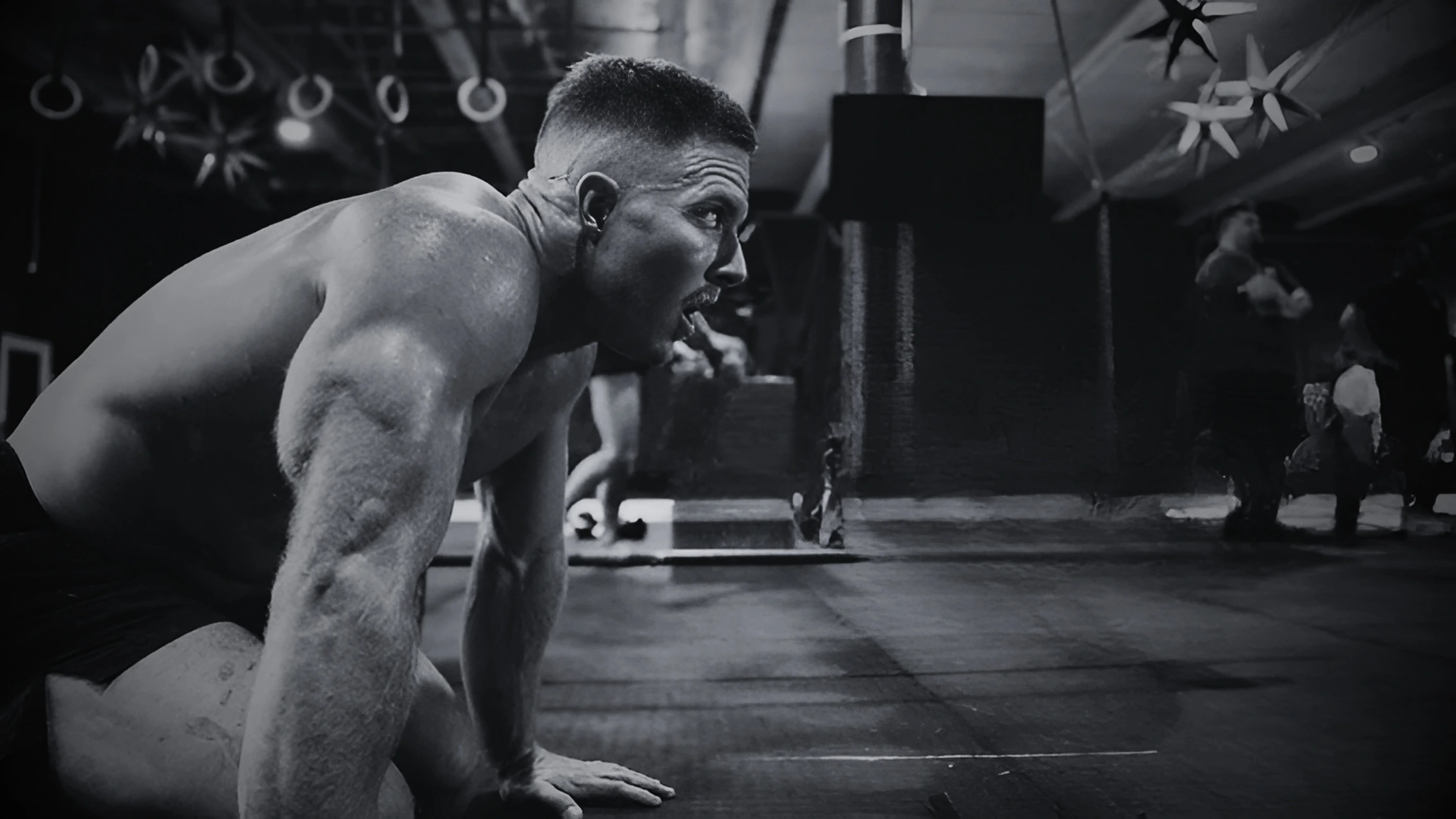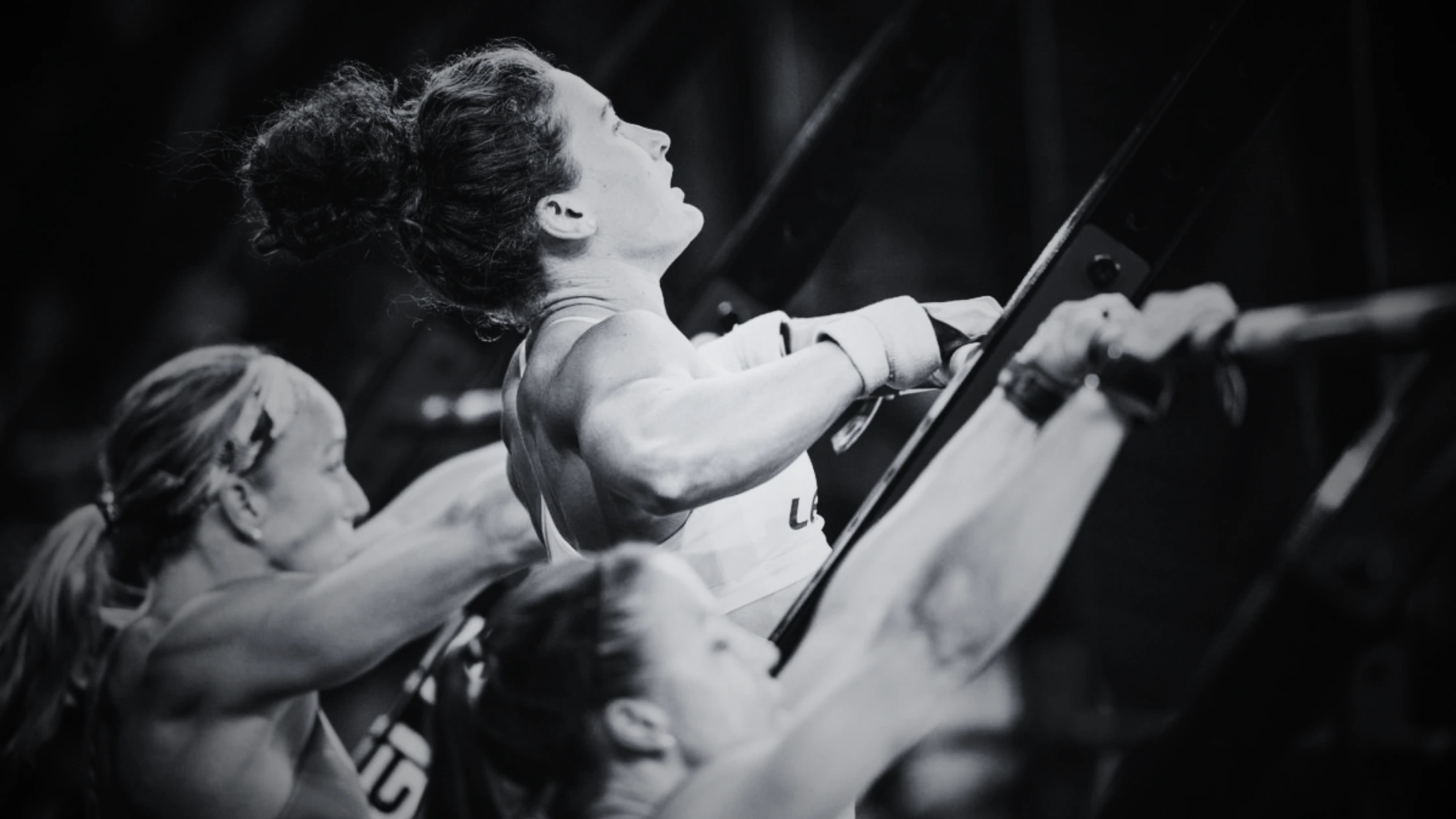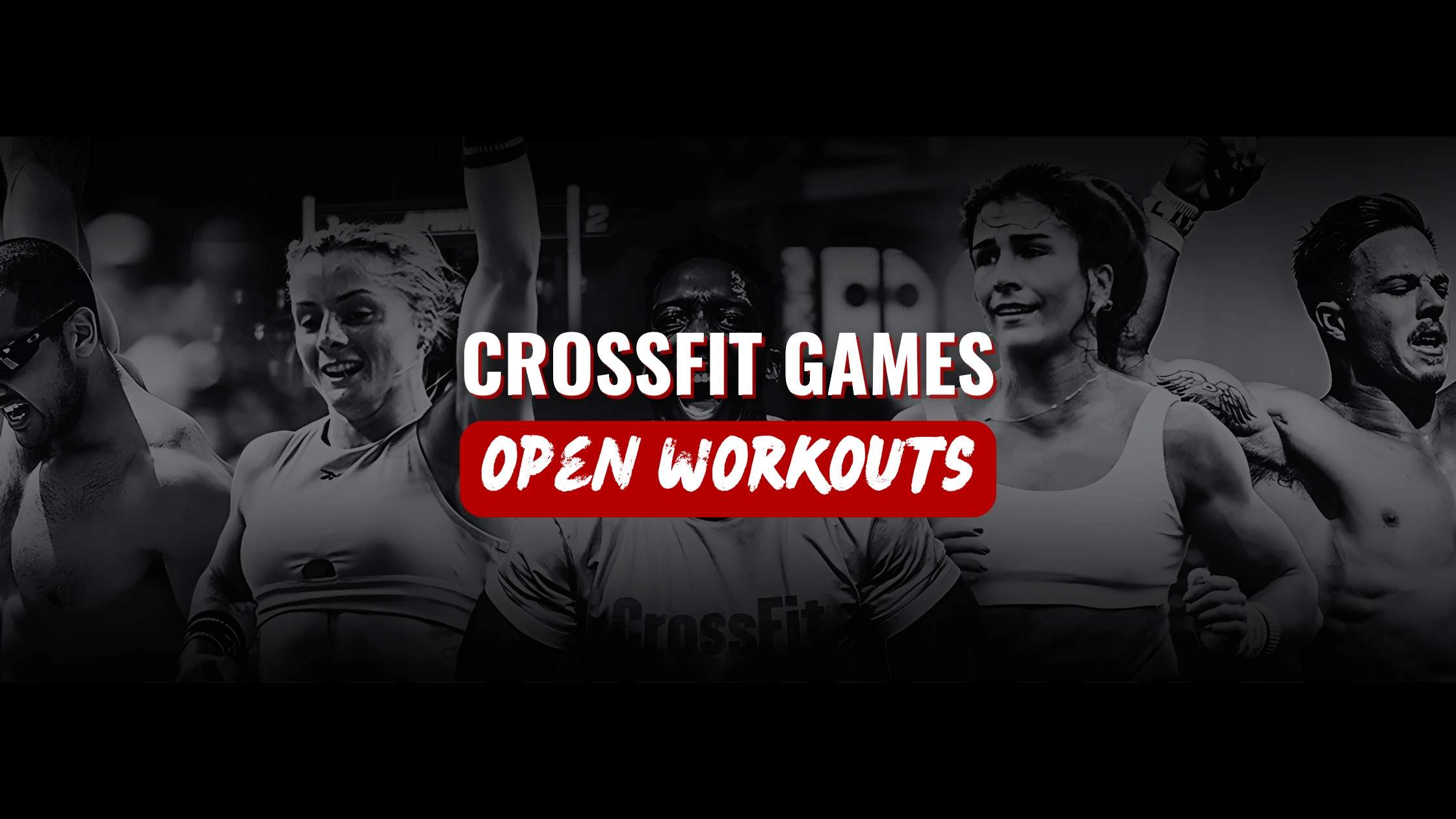The CrossFit Open 2025 workouts are bringing the biggest shake-up we’ve seen since the competition’s inception in 2011. With the elimination of quarterfinals and only the top 1% of athletes advancing directly to semifinals, we’re looking at approximately 1,600 men and 1,300 women competing at the highest level.
Running from February 27 to March 17, this year’s Open maintains its foundation of classic movements while introducing fresh challenges. In fact, throughout its history, five movements have remained constant: thrusters, double unders, toes to bar, chest to bar pull-ups, and barbell cycling. These workouts, typically lasting between 5 to 20 minutes, will now be judged under stricter standards, with all judges required to hold active L1 certification.
We’re here to help you navigate these changes and prepare for what could be your most successful Open yet. Whether you’re aiming for that top 1% or setting personal records, our comprehensive guide will ensure you’re truly ready for the challenge ahead.
Understanding the 2025 CrossFit Open Format
Registration for the CrossFit Open 2025 kicks off with a significant change – a USD 20.00 entry fee for all divisions. Additionally, a portion of these registrations will contribute to affiliate prizes, with USUSD 2,500 Rogue gift cards awarded based on global participation.
Key changes in the qualification process
The most notable shift comes with the elimination of quarterfinals across all divisions. The top 1% of athletes worldwide will advance directly to affiliate semifinals, translating to approximately 1,600 men and 1,300 women. Furthermore, CrossFit has introduced ten In-Person Qualifying Events (IPQE) from April through June, offering an alternative pathway to the Games.
Important dates and deadlines
The 2025 Open schedule follows a precise timeline:
- Registration opens: January 15, 8:00 PM
- Workout 25.1: February 27 – March 3
- Workout 25.2: March 6 – March 10
- Workout 25.3: March 13 – March 17
New judging standards and video requirements
Specifically, CrossFit has implemented stricter judging protocols for 2025. All judges must now hold an active L1 certification and complete both standard and advanced judges’ courses. For video submissions, athletes must record their performances with specific requirements:
Videos must be submitted through publicly viewable YouTube links. The recording must capture a ¾ view of the athlete during all movements, with the camera positioned at least three feet off the ground. Notably, the footage must remain uncut and unedited, with a visible clock throughout the workout.
For affiliate semifinals, each location requires both a Head Judge and a secondary judge, both holding current L1 certifications and completed judging courses. The Head Judge must appear in each athlete’s video and oversee the competition standards.

Analyzing Past CrossFit Games Open Workouts
Looking at historical data reveals fascinating patterns in CrossFit Open workouts. Statistical analysis shows that out of 60 scored workouts between 2011 and 2022, 35 were AMRAP-style events. Moreover, approximately 90% of time-capped workouts included a specific completion deadline.
Statistical breakdown of movement patterns
Movement consistency has been a hallmark of Open programming. Thrusters have appeared in week 5 for seven consecutive years, rather wall balls showed up in week 4 for four out of seven years. Consequently, deadlifts followed snatches in four out of seven years. The 2020 Open marked a significant shift as it was the first year without chest-to-bar pull-ups in the Rx’d version.
Performance analysis reveals notable gender differences across 56 out of 60 workouts. Men completed more repetitions in 18 workouts with small to large differences, whereas women excelled in 6 workouts with small to medium differences. In time-based workouts, men finished faster in 10 events, while women proved quicker in 3 workouts.
Predicting 2025 workout types
Based on historical patterns, the 2025 Open will primarily feature couplets and triplets. The workout structure typically follows two main patterns: skill-to-strength combinations and engine-to-power sequences. Essentially, we’ll see movements like dumbbell snatches paired with bodyweight exercises, as demonstrated in recent Opens.
South Korea has emerged as a competitive force, with 70% of their athletes completing the Rx’d version of recent workouts. This data suggests increasingly challenging standards for 2025, particularly in gymnastics and weightlifting combinations.
Historical workout trends and evolution
The evolution of Open workouts reflects significant changes in format and accessibility. From 2011 to present, workouts have shifted toward greater scalability and inclusivity. The addition of quarterfinals and semifinals provided more opportunities for athletes to compete at different levels.
Performance metrics show that fewer than 1% of athletes typically finish workouts in under 7 minutes. The most recent Open data indicates that 87% of men aged 18-34 chose Rx’d versions, compared to 73% of women in the same age group. These trends suggest that 2025 workouts will continue balancing accessibility with elite-level challenges.
Building Your Open Workout Strategy
Mastering your approach to the CrossFit Open 2025 requires more than just physical preparation. Research shows that athletes who plan their attempts strategically score significantly better than those who don’t.
First attempt vs repeat attempt planning
The decision to repeat an Open workout should be based on clear criteria, not just a desire to improve a few reps. Studies indicate that performance typically suffers when athletes attempt multiple repeats within the four-day window. For competitive athletes aiming for the top spots, planning two attempts can be beneficial, as data shows most high-level competitors improve their scores by several reps on second attempts.
Pacing guidelines for different workout types
Understanding workout-specific pacing is crucial for optimal performance. Analysis reveals that maintaining consistent round times leads to better overall scores. Here’s what research shows about effective pacing:
- AMRAP Workouts: Athletes perform best when maintaining an average rate of round completion, as this predicts 89% of performance variance
- Time Priority WODs: Success correlates with strategic rest periods between exercises, with data showing a 5.5% performance improvement when rest is properly managed
- Mixed Modal Events: Athletes should focus on transition efficiency, as this accounts for significant time savings across multiple rounds
Managing energy across multiple workouts
Recovery between attempts requires careful planning. Athletes who identify and execute appropriate strategies on initial attempts minimize fatigue accumulation over the five-week competition period. Subsequently, proper recovery protocols become essential:
Sleep quality plays a vital role in performance, with research showing that athletes need consistent rest periods between attempts. Although many athletes feel pressured to repeat workouts, data indicates that those who focus on single, well-executed attempts often achieve better overall placement.
For those choosing to repeat workouts, recovery isn’t just about rest – it’s about active preparation. Athletes should prioritize mobility work and light movement between attempts. Undoubtedly, proper nutrition timing and hydration become critical factors in maintaining performance across multiple attempts.
Remember that the Open isn’t just about individual workouts – it’s about maintaining performance across three consecutive weeks. Accordingly, your strategy should account for both immediate workout demands and long-term energy management.
Physical Preparation Benchmarks
Preparing for the CrossFit Open 2025 demands meeting specific physical benchmarks that align with competition standards. Athletes aiming for the top spots need to focus on mastering key movements and achieving crucial strength milestones.
Essential movement standards to master
Successful Open performance primarily depends on mastering five fundamental movements. Thrusters require athletes to maintain hip crease below knee level in the bottom position, with complete lockout overhead. Similarly, chest-to-bar pull-ups demand clear contact between the chest and bar at or below the collarbone. For bar muscle-ups, athletes must pass through a portion of a dip before reaching full lockout, with shoulders positioned over or slightly in front of the bar.
The thoracic mobility for these movements requires specific preparation. Indeed, athletes should focus on latissimus dorsi length and spinal mobility to maintain proper positioning. Likewise, proper execution of toes-to-bar demands significant core strength and quick repetitive back extension.
Strength and conditioning requirements
Based on historical qualification data, athletes should meet specific strength benchmarks. For male athletes, these include a back squat of 120kg and snatch of 70kg, while female athletes should aim for 70kg and 47kg respectively. Generally, the 2km row test serves as a reliable indicator, with qualifying times under 7 minutes for men and 8 minutes for women.
The conditioning requirements extend beyond single-effort maximums. Athletes must develop proficiency in three distinct energy systems:
- Phosphagen pathway for explosive movements
- Glycolytic pathway for moderate-duration efforts
- Oxidative pathway for sustained performance
Testing your readiness with benchmark WODs
Presently, benchmark workouts serve as the most reliable indicators of Open readiness. For intermediate athletes, target times include completing Fran between 6-7 minutes and achieving 250-350 reps in Fight Gone Bad. Nevertheless, these benchmarks should be viewed as guidelines rather than strict requirements.
Performance metrics indicate that successful Open athletes excel in mixed modal workouts lasting 5-20 minutes. The ability to maintain consistent output across varied time domains proves more valuable than exceptional performance in a single domain. Athletes should prioritize testing their capacity in couplets and triplets that combine moderate loads with gymnastics movements.

Recovery and Performance Optimization
Proper recovery stands as the cornerstone of peak performance during the CrossFit Open 2025. Research shows that athletes who prioritize recovery between workouts experience significant improvements in their subsequent performances.
Between-workout recovery protocols
Active recovery proves more beneficial than complete rest. Athletes should engage in low-intensity activities that promote blood flow without taxing the nervous system. Primarily, foam rolling and mobility work help alleviate muscle tension and enhance recovery between workouts.
For optimal results, athletes should implement contrast therapy and compression techniques to accelerate muscle recovery and reduce inflammation. Above all, maintaining proper blood flow through movement helps prevent muscle stiffness and promotes faster healing.
Nutrition timing and strategies
Proper nutrition timing creates the foundation for recovery and performance. Athletes should structure their meals around these key timeframes:
- Within three hours before workouts for sufficient energy
- Within two hours post-workout for optimal protein synthesis
- Regular meals throughout the day to maintain energy levels
The body requires high-quality, unprocessed foods to support exercise and recovery. As a result, athletes should focus on meat, vegetables, nuts, seeds, and minimal starch while avoiding sugar. This approach, combined with proper portion control, yields remarkable improvements in health and fitness markers.
Sleep and stress management
Quality sleep emerges as the most crucial recovery tool, with research indicating its fundamental role in muscle repair and hormone regulation. During deep sleep, the body increases growth hormone production, essential for repairing and building muscles. In fact, studies show that sleep deprivation can significantly impair muscle protein synthesis and training adaptations.
Athletes should aim for 7-9 hours of quality sleep each night. Therefore, creating an optimal sleep environment becomes essential:
Making the bedroom dark, cool, and quiet significantly improves sleep quality. Simultaneously, avoiding caffeine and alcohol before bedtime helps maintain natural sleep patterns. Research demonstrates that poor sleep quality affects 22.4% of CrossFit athletes, with females reporting more daytime dysfunction.
Stress management plays an equally vital role in recovery. Exercise itself acts as a hormetic stressor, reducing levels of adrenaline and cortisol while promoting endorphin production. In addition to regular training, implementing stress-reducing practices like meditation or deep breathing exercises helps maintain optimal recovery.
Conclusion
CrossFit Open 2025 brings significant changes that will reshape competitive CrossFit. The elimination of quarterfinals and stricter judging standards certainly raise the bar for all participants. While these changes might seem daunting, our comprehensive analysis shows that success depends on three key factors: strategic workout planning, meeting specific physical benchmarks, and maintaining optimal recovery protocols.
Athletes who excel in the 2025 Open will be those who understand historical patterns and prepare accordingly. Therefore, mastering fundamental movements like thrusters and chest-to-bar pull-ups remains essential. Additionally, developing proficiency across all three energy systems will prove crucial for handling whatever challenges the Open presents.
Remember that preparation extends beyond physical training. Smart athletes will focus on recovery through proper nutrition, quality sleep, and stress management. These elements, though often overlooked, can make the difference between a good performance and a great one.
The CrossFit Open 2025 offers an opportunity to test your limits and showcase your progress. Whether you’re aiming for that coveted top 1% or working toward personal goals, success comes from thorough preparation and intelligent execution. Start your preparation now, and you’ll be ready to face whatever challenges the Open brings your way.
CrossFit Open 2025 Workouts: FAQs
Q1. How should I prepare for the CrossFit Open 2025? Focus on mastering fundamental movements like thrusters and chest-to-bar pull-ups. Incorporate 5-20 minute couplets and triplets with light to moderate loads in your training. Develop proficiency across all energy systems and practice workouts that combine barbell exercises, gymnastics, and cardio elements.
Q2. What are the key changes in the 2025 CrossFit Open format? The 2025 Open eliminates quarterfinals, with only the top 1% of athletes advancing directly to semifinals. There’s a $20 entry fee, stricter judging standards requiring active L1 certification, and new video submission requirements. The competition runs from February 27 to March 17, with three workouts released over three weeks.
Q3. How can I optimize my recovery between Open workouts? Prioritize quality sleep, aiming for 7-9 hours per night. Implement active recovery techniques like foam rolling and low-intensity movement. Focus on proper nutrition timing, consuming high-quality, unprocessed foods. Manage stress through practices like meditation or deep breathing exercises.
Q4. What should I eat before and during the CrossFit Open? Eat an easily digestible carbohydrate meal about two hours before your workout, such as oatmeal with fruit. During the competition weeks, maintain a diet rich in meat, vegetables, nuts, seeds, and minimal starch while avoiding sugar. Stay hydrated and consider carbohydrate supplements for extra energy during workouts.
Q5. How should I approach attempting Open workouts? Plan your attempts strategically. For most athletes, focusing on a single, well-executed attempt per workout is often more effective than multiple repeats. If you’re aiming for top spots, consider planning two attempts, as high-level competitors often improve their scores on second tries. Always prioritize proper form and pacing over rushed repetitions.


2 thoughts on “CrossFit Open 2025 Workouts: Are You Really Ready?”
Comments are closed.